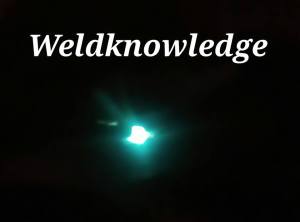If the density of the energy coming from a source is high enough, the rate at which it is deposited greatly exceeds the rate at which it is lost by being conducted into the workpiece. In this case, the material at the point of deposition rises in temperature not just to the melting point, but well above that. In fact, the temperature can rise to the boiling point, converting liquid to vapor, superheating the vapor. When this occurs, the energy source is said to be operating in the keyhole mode. This mode (as opposed to the melt-in mode) begins to occur at energy densities above around 109 W/m2.
Once vapor is formed by such high energy densities, it expands, is released upward away from the surface, and produces a reaction force that presses the melt downward and sideways. The result is a depression that permits additional photons (from a laser beam), electrons (from an electron beam), or electrons and ions (from a plasma arc) to impinge upon fresh material, which is then heated in the same way. The depression becomes larger and transforms to a keyhole, the entire central core of which consists of vapor surrounded on all sides by an envelope of liquid. For sufficient energy input, this keyhole will penetrate entirely through the thickness of the workpiece, even if this is several centimeters or inches. In this way, the faces of the two joint elements can be melted, the molten material flows back into the molten weld pool, metallurgical continuity is obtained, and solidification can occur to produce a weld.
While welding proceeds with a keyhole, hydrodynamic forces (particularly from gravity) intermittently cause the molten envelope surrounding the vapor cavity or keyhole to collapse. When this occurs, the stream of incoming energy is momentarily blocked, penetration is momentarily lost, and defects in the form of voids can be left entrapped.

(a) initial deposition of impinging energy on the surface;
(b) surface heating and inward propagating of heat to cause melting anywhere T > TMp
(c) continued inward propagation of heat to raise a larger volume of material to above TMp, and elevation of temperature near the surface to above TBp, causing vaporization and a downward force on the liquid;
(d) continued deposition of heat, increased vaporization and greater depression of liquid, and increased growth of melted volume; and
(e) Eventual penetration of vapor cavity through thickness to produce a keyhole of vapor surrounded by molten material.
